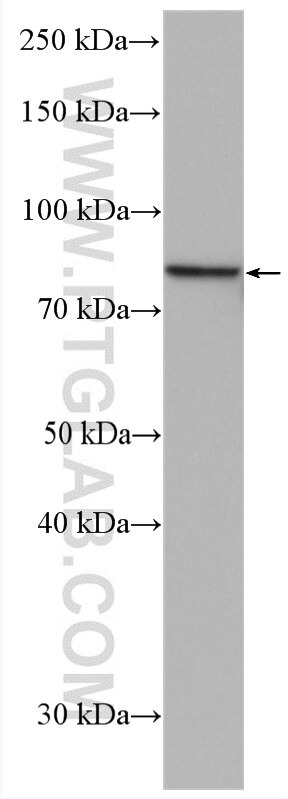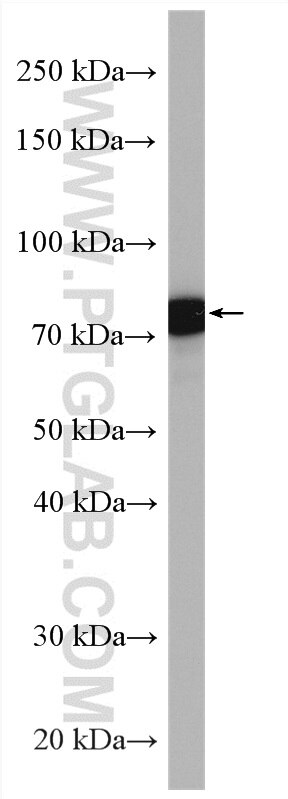Tested Applications
| Positive WB detected in | LNCaP cells, mouse brain tissue |
Recommended dilution
| Application | Dilution |
|---|---|
| Western Blot (WB) | WB : 1:500-1:2000 |
| It is recommended that this reagent should be titrated in each testing system to obtain optimal results. | |
| Sample-dependent, Check data in validation data gallery. | |
Product Information
28154-1-AP targets PLEKHH3 in WB, ELISA applications and shows reactivity with Human, Mouse samples.
| Tested Reactivity | Human, Mouse |
| Host / Isotype | Rabbit / IgG |
| Class | Polyclonal |
| Type | Antibody |
| Immunogen |
CatNo: Ag28001 Product name: Recombinant human PLEKHH3 protein Source: e coli.-derived, PGEX-4T Tag: GST Domain: 251-404 aa of BC052978 Sequence: YGVSAPGPGYAPLREEAVRLFLALQALEGARRPGPLMQGVLQTCRDLPALRDELFLQLAKQTSGPAGPPGLPATQDPAALRYWQLLTCMSCTFRPGGAVRGHLLGHLERTEQALPDSELAEYARFIRKALGRTRGRELVPSLAEISALSQRQEL Predict reactive species |
| Full Name | pleckstrin homology domain containing, family H (with MyTH4 domain) member 3 |
| Calculated Molecular Weight | 793 aa, 85 kDa |
| Observed Molecular Weight | 85 and 80 kDa |
| GenBank Accession Number | BC052978 |
| Gene Symbol | PLEKHH3 |
| Gene ID (NCBI) | 79990 |
| RRID | AB_2881076 |
| Conjugate | Unconjugated |
| Form | Liquid |
| Purification Method | Antigen affinity purification |
| UNIPROT ID | Q7Z736 |
| Storage Buffer | PBS with 0.02% sodium azide and 50% glycerol, pH 7.3. |
| Storage Conditions | Store at -20°C. Stable for one year after shipment. Aliquoting is unnecessary for -20oC storage. 20ul sizes contain 0.1% BSA. |
Background Information
PLEKHH3, a gene related to endothelial tight junction, is associated with obstructive sleep apnea (OSA) and angiogenesis. It has been reported that the expression of PLEKHH3 protein was increased in the OSA patients. PLEKHH3 may play a key role in OSA and angiogenesis by specifically regulating the endothelial cells formation of tight junctions. 28154-1-AP detects the isoforms of PLEKHH3 protein around 80-85 kDa in SDS-PAGE.(PMID:28520763)
Protocols
| Product Specific Protocols | |
|---|---|
| WB protocol for PLEKHH3 antibody 28154-1-AP | Download protocol |
| Standard Protocols | |
|---|---|
| Click here to view our Standard Protocols |






